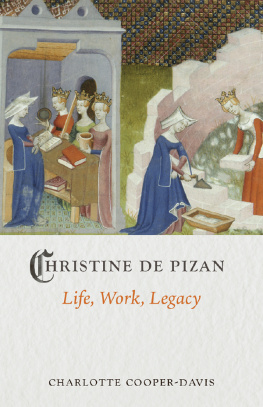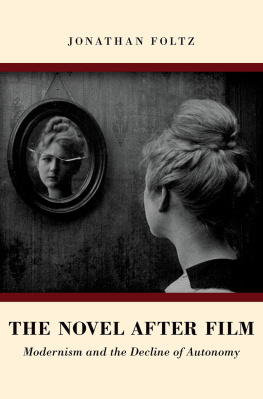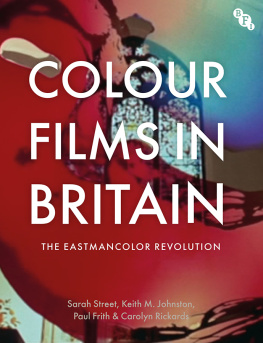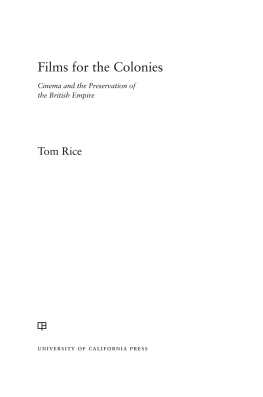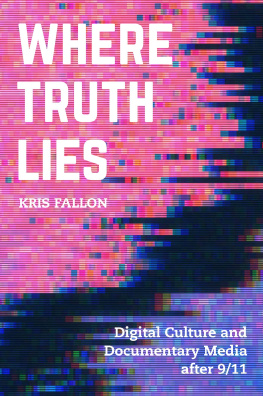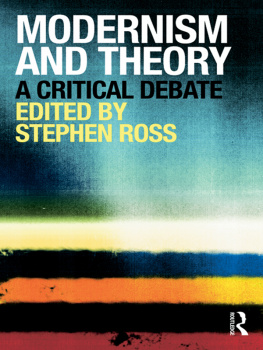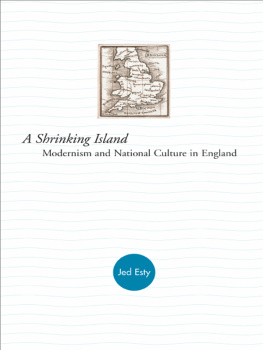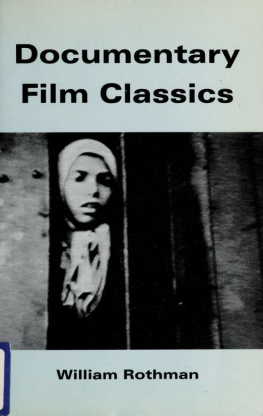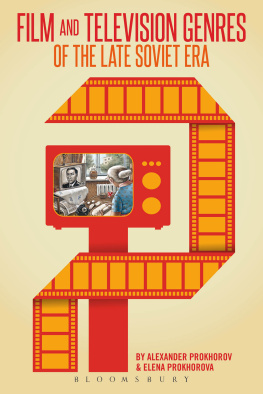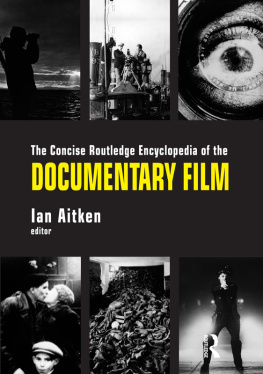THE EXTINCT SCENE
MODERNIST LATITUDES
MODERNIST LATITUDES
JESSICA BERMAN AND PAUL SAINT-AMOUR, EDITORS
Modernist Latitudes aims to capture the energy and ferment of modernist studies by continuing to open up the range of forms, locations, temporalities, and theoretical approaches encompassed by the field. The series celebrates the growing latitude (scope for freedom of action or thought) that this broadening affords scholars of modernism, whether they are investigating little-known works or revisiting canonical ones. Modernist Latitudes will pay particular attention to the texts and contexts of those latitudes (Africa, Latin America, Australia, Asia, Southern Europe, and even the rural United States) that have long been misrecognized as ancillary to the canonical modernisms of the global North.
Barry McCrea, In the Company of Strangers: Family and Narrative in Dickens, Conan Doyle, Joyce, and Proust, 2011
Jessica Berman, Modernist Commitments: Ethics, Politics, and Transnational Modernism, 2011
Jennifer Scappettone, Killing the Moonlight: Modernism in Venice, 2014
Nico Israel, Spirals: The Whirled Image in Twentieth-Century Literature and Art, 2015
Carrie J. Noland, Voices of Negritude in Modernist Print: Aesthetic Subjectivity, Diaspora, and the Lyric Regime, 2015
Susan Stanford Friedman, Planetary Modernisms: Provocations on Modernity Across Time, 2015
THE EXTINCT SCENE
LATE MODERNISM AND EVERYDAY LIFE
THOMAS S. DAVIS
COLUMBIA UNIVERSITY PRESS
NEW YORK
Publication subvention grant from the College of Arts and Sciences at the Ohio State University. Portions of this book initially appeared as articles in Literature Compass, Twentieth Century Literature, and Textual Practice. They are reprinted here with permission. I would also like to thank the editorial boards at those journals for valuing my work and for finding readers that asked hard questions. Sian White and Pamela Thurschwell were kind enough to include me in their special issue of Textual Practice on Elizabeth Bowen.
Auden, W. H. Spain 1937, copyright 1940 and copyright renewed 1968 by W. H. Auden; from Selected Poems by W. H. Auden, edited by Edward Mendelson. Used by permission of Vintage Books, an imprint of the Knopf Doubleday Publishing Group, a division of Random House LLC. All rights reserved.
Auden, W. H. Muse des Beaux Arts, copyright 1940 and renewed 1968 by W. H. Auden; from Selected Poems by W. H. Auden. Used by permission of Random House, an imprint and division of Random House LLC. All rights reserved.
H. D. (Hilda Doolittle) from Trilogy copyright 1945 by Oxford University Press; Copyright renewed 1973 by Norman Holmes Pearson. Reprinted by permission of New Directions Publishing Corp and Pollinger Limited.
MacNeice, Louis. Collected Poems. Ed. Peter McDonald. London: Faber and Faber, 2007. Reprinted with permission of David Higham and Associates.
Auden, W. H. Muse des Beaux Arts, Spain 1937, The Voyage, Hong Kong, In Time of War.
Copyright 1937, 1939, 1940 by W. H. Auden, renewed. Reprinted by permission of Curtis Brown, Ltd.

Columbia University Press
Publishers Since 1893
New York Chichester, West Sussex
cup.columbia.edu
Copyright 2016 Columbia University Press
All rights reserved
Library of Congress Cataloging-in-Publication Data
Davis, Thomas S. (Thomas Saverance)
The extinct scene : late modernism and everyday life / Thomas S. Davis.
pages cm. (Modernist latitudes)
Includes bibliographical references and index.
ISBN 978-0-231-16942-4 (cloth : acid-free paper) ISBN 978-0-231-53788-9 (electronic)
1. English literature20th centuryHistory and criticism. 2. Modernism (Literature)Great Britain. 3. Literature and societyEnglandHistory20th century. I. Title.
PR478.M6D38 2016
820.9'112dc23
2015005493
A Columbia University Press E-book.
CUP would be pleased to hear about your reading experience with this e-book at .
COVER DESIGNER: Archie Ferguson
COVER IMAGE: Henry Moore, War: Possible Subjects (194041). Reproduced by permission of the Henry Moore foundation.
References to websites (URLs) were accurate at the time of writing. Neither the author nor Columbia University Press is responsible for URLs that may have expired or changed since the manuscript was prepared.
FOR MAYA AND GAEL
CONTENTS
MOST FIRST SCHOLARLY books and the questions that animate them take shape in graduate school. Th is one began elsewhere, notably in an underground punk and hardcore scene in the mid to late 1990s where DIY music, leftist politics, queer and feminist thought, creative activism, and living-as-art inter mingled freely. From that community I learned about the power of art and music to emancipate marginalized individuals, to generate collective action, and to transform everyday life. It was also there that I first heard the name Guy Debord. I quickly became convinced that art could reveal things about everyday life and possibly help us conceptualize the political and social pressures that shape what and how we think. I carried that conviction into graduate school and turned it into something of a question, one perhaps bearing the traces of age, skepticism, and disappointment: If art bears any relationship to everyday life, what is it? How does that relationship morph over time? I dont know that I found a perfect answer, but this book was one way to think through that and to do so by living with a handful of artists that I loved and came to love.
Of course, questions dont emerge or develop in solitude. I was fortunate to have colleagues and mentors that truly shaped my intellectual development and political commitments. Maud Ellmann, Luke Gibbons, and Barbara Green not only increased my interest in modernism, they demonstrated the importance of methodology, of asking fruitful questions and thinking at once historically and theoretically. I learned an enormous amount simply by observing them and listening to them. Kevin Hart cultivated my interest in philosophies of everyday life, making Maurice Blanchot a permanentone might say infinitepart of my life. He provided wonderful guidance throughout the development of this project and managed to describe philosophical debates with unparalleled clarity. Jerry Bruns took a semester and read Walter Benjamin, Martin Heidegger, and Theodor Adorno with me; much of what I think about art goes back to those weekly conversations. Conversations with Marlene Daut Zaka, Juan Sanchez, Nathan Hensley, and Jay Miller were all important, and they became my most trusted interlocutors and remain dear friends. Nathan has likely read more of this manuscript than anyone else, and our conversations about it over the years have made it all the better.
My intellectual home at Ohio State University has provided an incredibly nurturing environment. Several colleagues read and commented on drafts, offered advice in research and professional matters, or simply engaged me in conversations that helped this project in ways they probably do not realize. I can but name them here (and I am sure this list is incomplete): Chad Allen, Jonathan Buehl, David Brewer, Molly Farrell, Jill Galvan, Aman Garcha, David Herman, Pranav Jani, Koritha Mitchell, Steve Kern and the Modernism Working Group, Ethan Knapp, Leslie Lockett, Sandra MacPherson, Brian McHale, Debra Moddelmog, Sean OSullivan, Jim Phelan, Joe Ponce, Jesse Schotter, Antony Shuttleworth, and Robyn Warhol. Friends and colleagues in modernist studies have been more than generous with their time and advice. Amy Clukey, Jed Esty, James Gifford, Janice Ho, Aaron Jaffe, Marina MacKay, Allan Hepburn, Jesse Matz, Liesl Olson, Peter Kalliney, Nicole Rizzuto, Stephen Ross, Aarthi Vadde, and Tim Wientzen either read chapters, discussed ideas and problems with me that are central to this book, or simply offered encouragement at times when it was needed most. As this project came to a close, Chris Holmes, Jennifer Spitzer, and Aarthi Vadde gave me the opportunity to share some of these ideas at the Global Modernisms Symposium in Ithaca, New York. Paul Saint-Amour and Jessica Berman have demonstrated confidence in this project all along and offered more kindness and encouragement than I had any reason to expect. Philip Leventhal has provided expert editorial advice (and admirable patience!) along the way, often helping me navigate and weather some of the complexities of book production. I thank, too, the anonymous readers that Paul, Jessica, and Philip selected. Their commentary and criticism was extraordinarily incisive and helpful.
Next page

